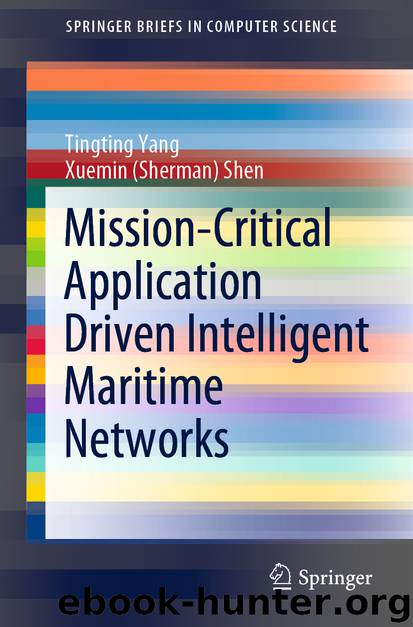Mission-Critical Application Driven Intelligent Maritime Networks by Tingting Yang & Xuemin (Sherman) Shen

Author:Tingting Yang & Xuemin (Sherman) Shen
Language: eng
Format: epub
ISBN: 9789811544125
Publisher: Springer Singapore
Fig. 3.11Performance and comparison of utility value/cost expense
Changes in the average utility and throughput of the three algorithms in a frame system are shown in Figs. 3.10 and 3.11. In the figure, utility values are used to represent the system link utilization during data transmission. The throughput of the system increases with the increase of the arrival rate of the upper packet. The cache pressure of each terminal will increase with the arrival of data, which will lead to the reduction of the practical value of the system. In the optimal strategy, the system helps the cache reduce the pressure by increasing the output and increasing the cost. S-DQN algorithm makes the increase of normalized Q-value will lead to the increase of packet transmission and throughput. When the packet arrival rate starts to reach 1.5, the cache pressure slowly increases. In order not to affect the transmission of system data, a higher modulation mode will be selected automatically to improve the utilization rate of the system. At the same time, in order to improve the delay performance, the proxy increases the frequency of interaction with the environment with the change of modulation mode. The original DQN algorithm in Fig. 3.11 has relatively large utility value, so it is not compared in the same figure.
Fig. 3.12Performance and comparison of transmission energy consumption
Download
This site does not store any files on its server. We only index and link to content provided by other sites. Please contact the content providers to delete copyright contents if any and email us, we'll remove relevant links or contents immediately.
Embedded Programming with Modern C++ Cookbook by Igor Viarheichyk(4093)
Linux Device Driver Development Cookbook by Rodolfo Giometti(4022)
Implementing Cellular IoT Solutions for Digital Transformation by Dennis McCain(4009)
Embedded Linux Development Using Yocto Project - Third Edition by Otavio Salvador & Daiane Angolini(3870)
TinyML Cookbook by Gian Marco Iodice(3773)
Simplifying 3D Printing with OpenSCAD by Colin Dow(2904)
TinyML Cookbook by Gian Marco Iodice & Ronan Naughton(2659)
Fusion 360 for Makers by Lydia Sloan Cline(2308)
Networking A Beginner's Guide by Bruce Hallberg(2290)
Hands-On Linux for Architects by Denis Salamanca(2132)
Computers For Seniors For Dummies by Nancy C. Muir(2106)
But How Do It Know? by J. Clark Scott(2079)
Raspberry Pi and MQTT Essentials by Dhairya Parikh(2040)
Arduino Project Handbook, Volume 2: 25 Simple Electronics Projects for Beginners by Geddes Mark(1999)
9781803246888-ENHANCING DEEP LEARNING WITH BAYESIAN INFERENCE by Unknown(1971)
Hack and HHVM by Owen Yamauchi(1956)
31 Days Before Your CompTIA A+ Exams (Shanette Luellen's Library) by Benjamin Patrick Conry(1925)
Hands-On Internet of Things with MQTT by Tim Pulver(1828)
MicroPython Projects by Jacob Beningo(1818)
